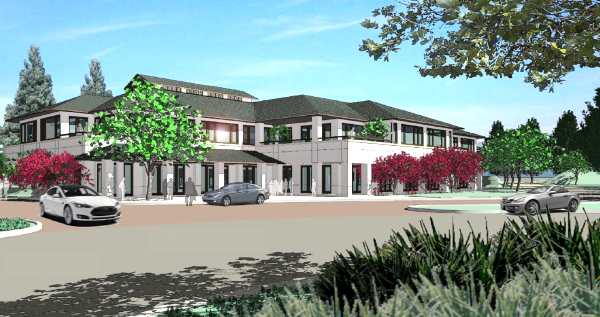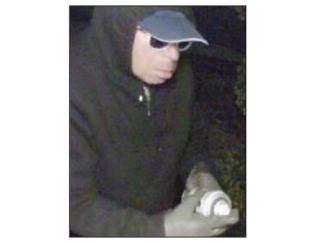
Above is a rendering of the 40,000-square-foot office building that was approved for 2131 Sand Hill Road. Illustration submitted by Stanford to the city.
BY EMILY MIBACH
Daily Post Staff Writer
Menlo Park City Council narrowly approved Stanford’s development on Sand Hill Road after Mayor Kirsten Keith and Stanford officials got into a dispute about environmental issues she raised late in the approval process.
The 40,000-square-foot project at 2131 Sand Hill Road was approved 3-2 on Tuesday, with Keith and Councilman Ray Mueller dissenting.
Diane Bailey, who was the only member of the public to comment on the project at Tuesday’s meeting, said the building could be more environmentally friendly.
After Bailey’s comments, Keith and Councilwoman Catherine Carlton asked Stanford officials Steve Elliott and John Donahoe whether they would be willing to commit to reducing the greenhouse gas emissions from the development in order to achieve a higher environmental ranking.
“I am more concerned about the environment than your 44,000-square-foot building,” Keith said.
But both Donahoe and Elliott said they couldn’t commit to the higher environmental standards because, as Donahoe put it, the request came “at the 13th hour.” He pointed out that the project had been looked at by council three times prior to Tuesday’s meeting, on Aug. 29, Sept. 26 and Oct. 10, and this issue was not raised at any of those meetings.
“We cannot guarantee anything. We can’t redesign the building here in the last hour … but we will strive and make commitment to reach that gold equivalent because that’s clearly important to you,” Elliott said.
A gold ranking is one of several levels of environmental compliance set by the U.S. Green Building Council in its Leadership in Energy and Environmental Design, or LEED, program.
However, Keith wanted Stanford to commit to that standard, saying she’d postpone a vote on the project until Stanford could give a firm answer, or even until the council passes an ordinance requiring higher environmental standards for all businesses in the city. However, City Attorney Bill McClure said the later option was not viable because the new environmental ordinance is a long way from reaching council.
Vice Mayor Peter Ohtaki suggested Stanford look into buying its energy from Peninsula Clean Energy, which only re-sells renewable energy.
Donahoe said he would consider it, but expressed frustration that it was coming up in the 13th hour, and not at the Aug. 29 or Sept. 26 meeting.
Bailey had acknowledged in her comments to council that her request came at the last minute, but Keith said it was worth her bringing it to the council during comments. Donahoe pointed out that the council had closed the public hearing portion of the project at its last meeting, but McClure said since the issue was being brought up at this meeting, that Bailey was OK to comment.
The council ultimately approved the project, with Ohtaki saying he was voting in favor because he “takes it in good faith that Stanford will look into LEED gold and Peninsula Clean Energy.”
This was not the first showdown the council has had with Stanford over the project at 2131 Sand Hill. At its Aug. 29 meeting, council told Stanford that it needed to sit down with residents of the Sharon Oaks neighborhood across Sand Hill Road from the project, and talk about their request for Stanford helping pay for a new sound wall.
Elliott responded at that meeting calling the request from neighbors a “money grab,” and said the university doesn’t feel it should be held responsible for the wall. Stanford ultimately won that argument, with Stanford not pitching in with the sound wall.



